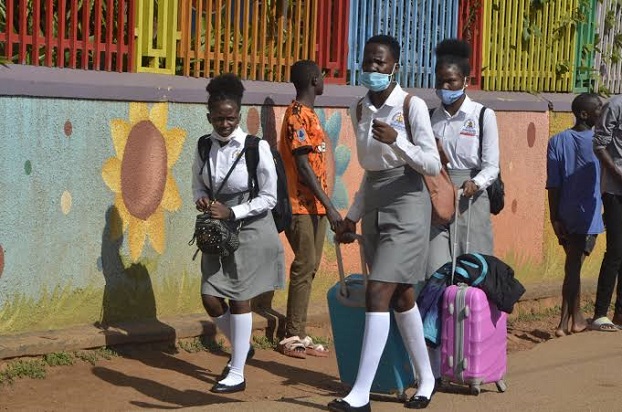‘‘Sometimes, we experience prolonged dry seasons, while the rainy season is shorter. I cannot recall how many times, I have replaced seedlings as a result of prolonged drought.’’
‘‘It is increasingly becoming difficult to know when to plant coffee. We have to keep buying seedlings to replant since some of them dry up after planting.’’
‘‘The changing rainfall patterns cause uncertainty on seasons. The droughts have become longer, yet the rains are shorter, and rainfall during the rainy season is becoming more erratic.’’
These are common and real farmer experiences. Historically, the rainy season in Uganda is between March-May and October to November. Light rain season falls in November and December. Dry seasons often happen between December to February and June to August.
But the country is facing significant effects of a changing climate; increased frequency of extreme weather events such as floods, drop in water levels, changing weather patterns, as well as drought, whose social and economic influences make farming communities very vulnerable. Indubitably, the frequency and severity of extreme weather events have a significant impact on agriculture with long-term implications of poverty and increased food insecurity.
Benefits of shade:
The majority of smallholder coffee farmers in Uganda rely on the seasonal rains to ripen the beans. The price they get for their coffee is strongly influenced by bean characteristics such as size and minimal defects, which are largely influenced by the amount and timing of rainfall.
Ms. Lorna Kwaka, an agronomist at the National Coffee Research Institute (NaCORI), says too little rainfall during the growing season stresses plants, which may cause branch death, defoliation or reduce resources for fruiting. This, she adds, may lead to small and damaged coffee beans. On the contrary, Kwaka, notes that high temperatures can accelerate berry development and ripen, reducing bean filling and in turn causing smaller bean sizes.
‘‘Unfavorable rainfall and temperature can also promote conditions that damage and discolor coffee beans. Too much rainfall can dislodge flowers and fruits, or if heavy rain occurs during harvest, increased moisture favors conditions for mold growth, disease, and excessive fermentation, all of which may increase coffee bean defects,’’ Kwaka adds.
In the face of a changing climate, smallholder farmers need locally available and sustainable adaptation strategies. One such strategy is planting shade trees in their coffee gardens.
According to Dr. Godfrey Sseremba, a senior Researcher at NaCORI, shade can reduce temperatures in the coffee canopy by up to 2°C. Shade trees and crops such as bananas help to adapt the coffee systems to increasing temperatures, but also provide additional food and income.
In addition, some shade trees are a source of foliage for domestic animals and at the same time an important source of firewood in rural households, when they are pruned to regulate shade.
Deep-rooted shade trees recover soil nutrients from deeper soil horizons and transport them to their leaves. When the leaves fall and rot, they provide organic matter or manure, which is released to the coffee plantation. This organic matter improves the soil texture and water retention. Besides, the deep-rooted trees do not compete with coffee for water and other nutrients.
Shade trees of the leguminous species capture needed nitrogen from the atmosphere and convert it into nitrates, which are used by coffee for numerous purposes.
They also act as windbreakers to protect the coffee trees from excessive and destructive winds.
The National Coffee Research Institute (NaCORI) has recommended shade tree species for each of the six coffee-growing sub-regions in Uganda. The most common tree species that farmers are familiar with our mugavu (Albizia coriaria) and mutuba (Ficus natalensis). Some farmers, especially in coffee-growing areas in Central Uganda, best describe the former as Omugavu Omuganda.
Farmers need to appreciate the pluses and minuses of intercropping such trees and other crops in their gardens, especially as production areas become drier and hotter. The decision about which shade tree to intercrop with coffee should be informed by facts.
According to studies by NaCORI, Some tree species have been found to be alternative hosts to pests that adversely affect plant yields. The damage caused by pests such as the Black Coffee Twig Borer to Robusta coffee production, for instance, is likely to increase as the climate warms because these suck sap from the plant and reproduce rapidly during such seasons.
Dr. Sseremba says adding shade or shade crops to a coffee system increases competition among the different plants for water, nutrients, and light. But he advises that this should be managed by using good agronomic practices such as soil and water conservation practices, integration of fertilizers, and organic nutrient inputs.
Farmers also need pest management tactics that accentuate the use of locally-available materials. Such often turn out to be affordable, sustainable, and environmentally-friendly. They do not encourage the use or spraying of man-made chemicals, which is desirable in organic coffee farming. Methods such as trapping insect pests; using natural pesticides extracted from plant or animal origins; planting other plant species on-farm to repel the dangerous pests are some of the farmer-friendly means that can be explored.
Source: NARO website






Iam a small scale coffee,but challenged by infection of twig borers . How can handle this